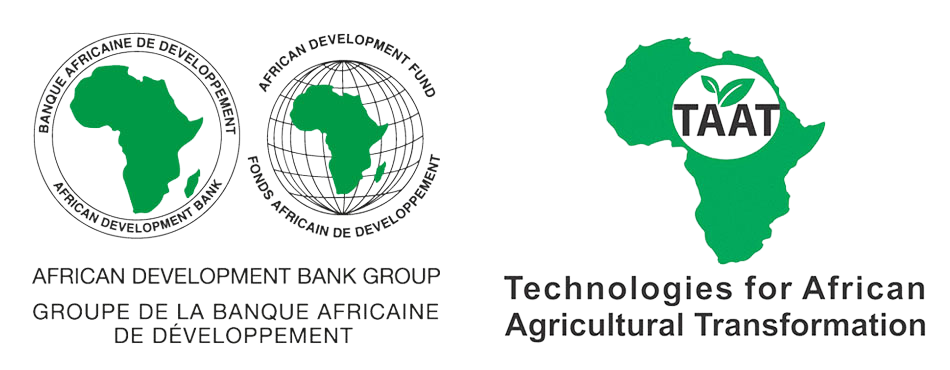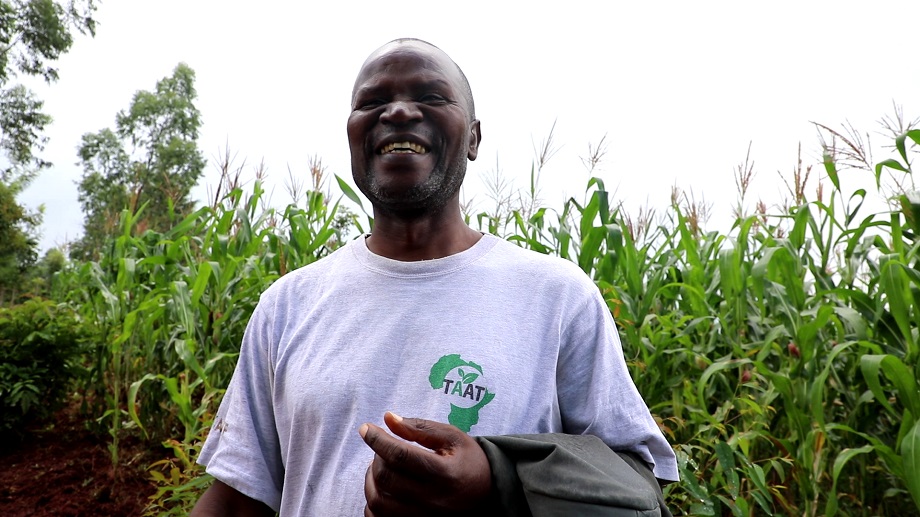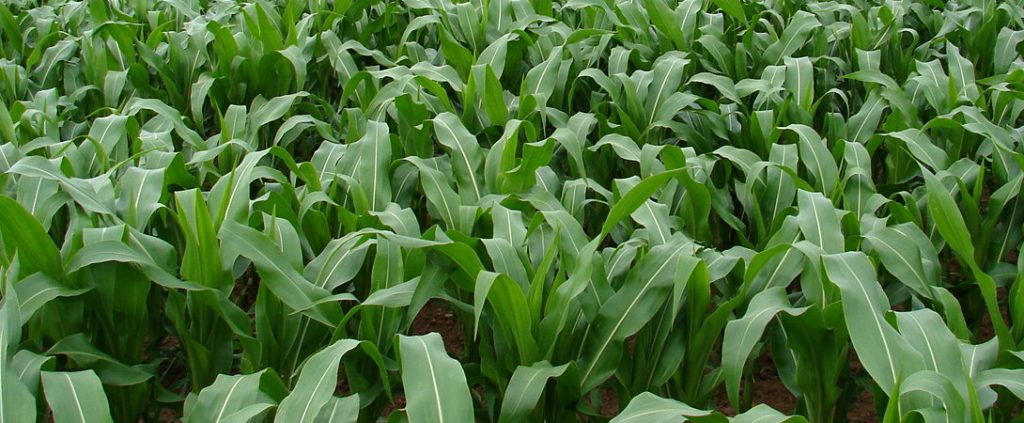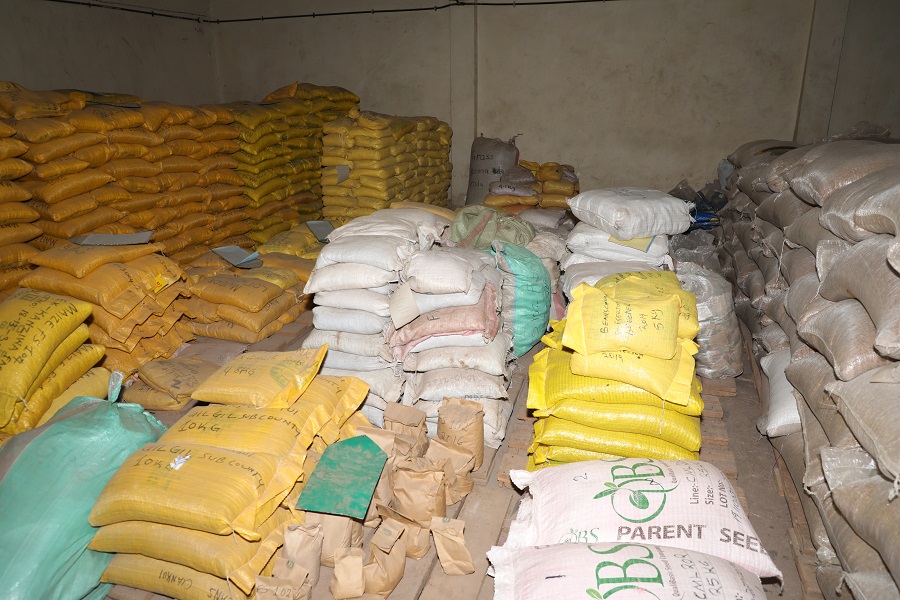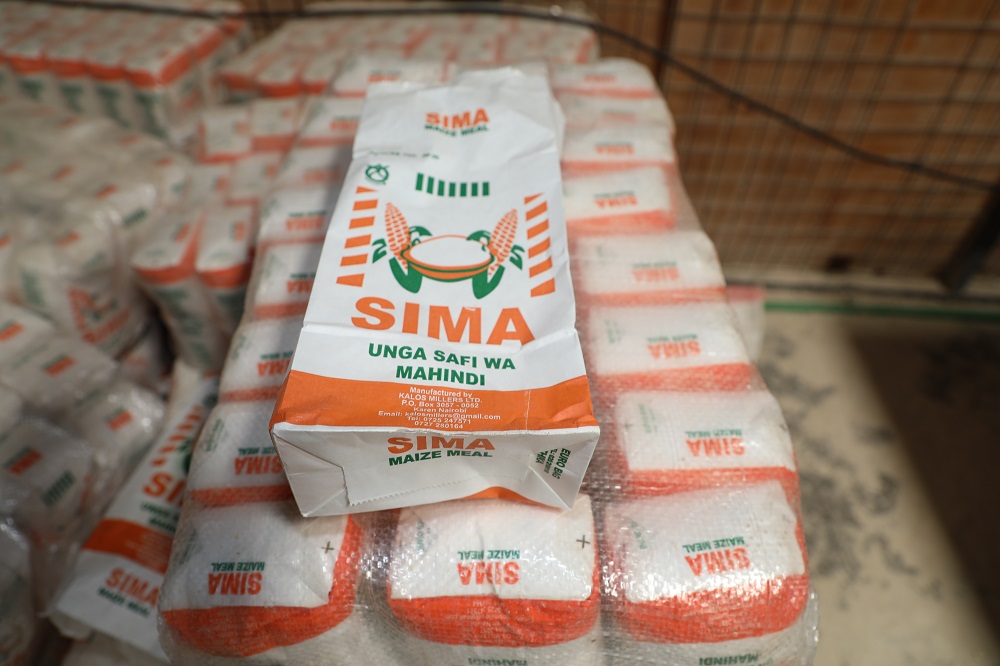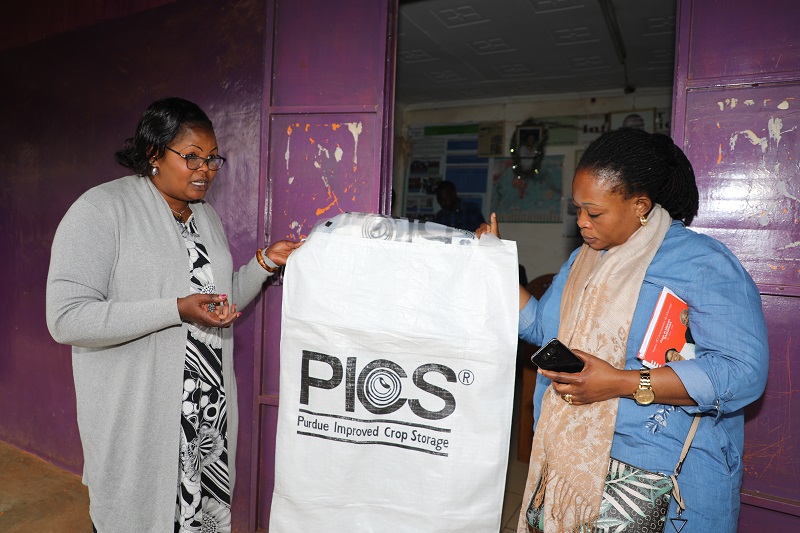TAAT’s pathway to scale up brings hope to maize farmers in Kenya
Maize (Zea mays) is one of the most important staple crops in Africa on which an estimated 300 million people depend. However, several challenges severely undermine maize production, including drought, diseases and insect pests such as the Fall Army Worm (FAW).
Fortunately, many proven technologies such as climate smart maize technologies, pest and disease tolerant varieties among others, have been developed by researchers worldwide to address some of these challenges.
Ensuring their delivery to farmers, at scale, still presents a challenge as many African farmers need to be facilitated to access agricultural credit in order to eliminate their capital constraints.
To address these challenges, the African Development Bank (AfDB), in 2018 launched Technologies for African Agricultural Transformation (TAAT) programme.
The programme is an integral part of its Feed Africa Strategy of 2016–2025.
TAAT’s overall objective is to harness high-impact, proven agricultural technologies to raise agricultural productivity in Africa; mitigate risks and promote diversification and processing in 18 agricultural value chains within eight priority intervention areas.
The programme increases agricultural productivity through the deployment of proven and high-performance agricultural technologies at scale along selected nine commodity value chains which include Maize, Rice, Wheat, High Iron Bean, Cassava, Orange Fleshed Sweet Potato, Sorghum/Millet, Livestock and Aquaculture.
These work with six enabler compacts addressing transversal issues such as soil fertility management, water management, capacity development, policy support, attracting African youth in agribusiness and fall armyworm response.
Climate smart maize technologies
As part of its mandate in the programme, the TAAT Maize Compact embarked on activities to increase uptake and use of high-yielding climate-smart maize hybrids by smallholder farmers; increase profit margins in the maize value chain through improved market linkages and agribusiness training; increase number of women and youth entrepreneurs and employment in the maize value chain; and increase maize productivity in Africa.
Led by African Agricultural Technology Foundation (AATF), the TAAT Maize Compact set in motion, the machinery to disseminate climate-smart maize technologies such as the elite Water Efficient Maize for Africa (WEMA) varieties across 16 target countries in Africa.
Other technologies deployed at scale include Appropriate Fertilizer blends; Optimal Maize Planting Density; Efficient Pest and Weed Management; Post-harvest Management; Supportive Marketing; Mechanization and Good Agricultural Practices.
The benefiting countries are Benin, Cameroon, Central African Republic, Congo DR, Ethiopia, Ghana, Kenya, Malawi, Mozambique, Nigeria, Rwanda, Tanzania, Togo, Uganda, Zambia and Zimbabwe.
Partnerships for technology dissemination
To meet its target of 2 million beneficiaries, the Compact established partnerships with all key stakeholders including governments, private sector, research institutes, commercial seed companies, farmer groups, commodity associations and National Agricultural Research Systems (NARS).
With smallholder farmers constituting a huge chunk of primary beneficiaries of maize technology transfer efforts, the TAAT Maize Compact focalised on involving women and youths in the maize value chain, aiming at increasing their participation by 20% and 10%, respectively.
The Compact therefore identified and deployed 8 technology toolkits to increase maize productivity by 2t/ha across the target countries. Through its extensive partnership network, the TAAT Maize Compact, within 18 months of implementation, recorded 1,003,640 direct beneficiaries with climate-smart maize hybrids!
This was made possible through field days, open days, hands-on training sessions and small seed packs distributions.
In partnership with 28 seed companies (4 in Kenya, 4 in Uganda, 6 in Tanzania, 8 in Zambia and 6 in Zimbabwe), the Maize Compact has so far facilitated the establishment of 4,256 demonstration plots, conducted 757 field days, distributed 84,321 free small pack seeds to boost the scale up of over 17,340 tons of climate-smart maize seeds produced in partnership with the seed companies.
Following the need for a fair assessment of the implementation with a view to gaining insight of stakeholders’ participation and involvement in the compact’s activities while considering the variability of different agro-ecological zone conditions, the TAAT Monitoring, Evaluation and Learning (MEL) System zeroed in on one of the target countries, Kenya.
Maize in Kenya
The choice of Kenya for the first evaluation mission cannot be oversimplified as Maize provides basic diet to millions of people in Kenya.
Total land area under maize production in the East-African country is about 1.5 million hectares, with an annual average production estimated at 3 million metric tons, giving a national mean yield of 2 metric tons per hectare.
Typically, yields range from 4 to 8 T/Ha in the high potential highlands of Kenya, representing only 50% (or less) of the genetic potentials of the hybrids. Highland maize varieties are grown on some 40-50% of the total maize area, representing 600,000 – 800,000 Ha.
Maize is the cheapest source of calories among the cereal grains, making up about 65% of total food calories consumed by households in Kenya.
To meet this demand, maize is produced on 40% of the total crop area – mainly by smallholders.
However, over the past decade, the average production has been well below 40 million bags, with the exception of 2012, 2013, 2015 and 2018. 2018 saw the highest production of 46 million bags.
Constraints for maize production in Kenya include drought, low soil fertility, pests and diseases. Foliar (leaf) and stalk/ear rot diseases and stem-borers cause great losses in maize production in the humid transitional and high tropics of Kenya.
Maize continues to be the most important staple food in Kenya as demand is growing, driven by population growth. The demand for maize currently stands at above 50 million bags and it has been projected to reach 60 million bags by 2025.
The widening gap between demand and domestic production has placed Kenya at the epicentre of the TAAT maize intervention.
With concurrent visits to multiple locations along the Western Kenya corridor namely, Nakuru, Vihiga Kisumu and Kakamega counties, the TAAT MEL team narrowed its focus to key value chain actors such as seed companies, millers and farmer groups.
These were strategically selected to rapidly fast-track scaling up of TAAT maize technologies through demo establishments, farmer field schools, processing of maize grain to sifted flour ready for marketing and consumption.
Additionally, a special attention was given to three outstanding developments namely the role of seed companies in scaling out the maize technologies; an out-grower scheme linked to an off-taker in one of the implementation sites to showcase a model of value chain analysis likely to be promoted; and the role of women and youth empowerment within the maize value chain as promoted by farmer groups.
Increasing access to quality seeds through seed companies
According to Dr. Jonga Munyaradzi, Leader of the TAAT Maize intervention, “the compact’s pathway to scaling up is visible in its work with private seed companies for impact.”
“This is hinged on its belief that that seed companies occupy a strategic position along the maize value chain, ensuring that farmers get high quality seed to increase productivity and improve on their livelihood mechanisms,” Jonga added.
Thus, aligning essentially with African Development Bank’s Feed Africa imperative on improving access to locally adapted, affordable and readily available quality certified seeds of high yielding varieties by smallholder farmers.
Through partnerships with Seed Co Ltd (on large-scale basis) in Nairobi and Faida Seed Company Ltd (on medium-scale basis) in Nakuru, the Compact successfully upscaled drought-tolerant maize varieties through the establishment of 439 demos for 3 varieties (Sc Duma 43, Sungura 302 and Punda Milia 529)
It further organised 3 large field days in collaboration with other partners to reach 554 farmers with 300 of these being women.
Samuel Angwenyi, TAAT Maize Compact’s Technology Transfer Officer, disclosed that the compact equally held 973 small field days to demonstrate demo plots by creating awareness on the performance of the climate smart varieties. 15 radio episodes and 2 road shows were organised along this line.
Other actions taken by the compact, Samuel says, include “distribution of climate-smart varieties small seed packs through 3 avenues including the local development organisations, Consultative Group on International Agricultural Research (CGIAR) centres and direct sales to reach many farmers.
“The sale of 4,500MT of climate-smart varieties alongside technical support extended to 160 lead farmers caps the list of the compact’s achievements,” Samuel added.
The partnership between the Compact and Seed Co Ltd remains a great initiative and it is lubricated through field day activities announced via social media platforms and radio stations to advocate and activate the uptake of climate smart technologies.
The field days provided a platform that brings together different key players such as research institutions (national and international), financial institutions, fertilizer companies, NGOs, Government representatives, farmer group representatives to discuss the future of agriculture in Kenya; to fight against hunger and improve farmers’ livelihood.
To Wellington Wasike, Managing Director of Seed Co Ltd, “field days give more visibility to promising technologies. We at Seed Co Ltd provide technical advice to farmers from planting to post-harvest handling to increase yields and reduce losses. Farmers also learn crop management techniques. The respect of the cropping calendar is very instrumental to pass each stage of cropping system with no risks of pest evasion”
A Private-Public-Partnership model to scale up
On the other hand, in Nakuru, Faida Seed Company (FSC) Ltd has partnered with the Compact to promote drought-tolerant hybrid KH500-31A. The company has the capacity to process 40MT of seeds.
FSC provide employment to 40 casual-seasonal labourers of which 80% are women for sorting, grading and packaging and 20% men for heavy lifting and treating the seeds.
Due to weather variability, the cropping season was not successful, causing shortages in seed availability.
To overcome this challenge, FSC Ltd was linked through the interface of AATF network to Ultravetis and Drylands Seed Companies to scale out KH500-31A and WE1101 (DroughtTEGO®).
Few deliverables achieved through this interface include the establishment of 30 demo plots in the long rain seasons (March-May 2019); 2 large field days organised in Njoro and Nyahururu; 19 demo plots established in the short rain seasons (Oct- Dec 2019 ongoing); and 25,000 small packs of KH500-31A distributed to 10,000 farmers
The partnership of FSC Ltd is another model of Public-Private-Partnership with the leading role played by Kenya Agricultural and Livestock Research Organisation (KALRO) in facilitating the mapping of all drought tolerant, disease resistant and high yielding varieties across the country as well as licensing the most promising varieties and accompanying technologies.
George Njihia, FSC Ltd Operations Manager glowingly highlighted the fact that “farmers are willing to pay for good quality seeds if they are guaranteed to have a marginal return on harvest. Farmers do not consider much the cost of acquisition of seeds; they are rather concerned by the performance of the seeds.”
“At the FSC, one lesson we have learnt is that demo plots are the engine for technology adoption by farmers. Publicity on-farm is the best impactful avenue for technology uptake and adoption,” Njihia added.
The value chain model to scale up
The TAAT Maize Compact also brought to light a value chain model linked to farmer groups. The Compact promoted this model for scaling
up technologies in in Nakuru county.
Registered as a sole proprietorship in 2011 and operating in Nakuru, the Food Chain Miller and the Compact partnered to provide a mechanism for farmers to link their produce to the readily available market.
The miller received 2 tons of WE1101 (DroughtTEGO®) seed through AATF which was distributed to selected 15 farmers for demonstration. The result showed that WE1101 (DroughtTEGO®) is 25% more productive than other varieties especially in mid-altitude areas.
The team observed that over a short timeframe, the partnership generated positive results and incentivized farmers for engagement.
Farmers producing volumes of DroughtTEGO® are provided with a transport subsidy in order to get their produce to the miller thereby removing a huge financial burden often hindering farmers.
With a capacity of processing 30 bags of 90 kg of maize per hour using a hammer milling machine, the TAAT Maize Compact’s efforts to engage farmers in post-harvest production became a promising pathway for scaling for impact.
Through the partnership, the miller also provided robust capacity building support to farmers regarding post-harvest handling techniques to be able to meet the requirements of the miller.
This knowledge sharing between private and public entities has helped to reduce post-harvest losses previously encountered by farmers and created incentives for better farming.
The TAAT Maize Compact is already moving swiftly with the scaling up of this model in other target countries.
By extending its tentacles in Nairobi, the miller has opened up to the Nairobi market with a current purchase order from Unga Limited to supply 15,000 bags of 90 kg maize grain worth KES 45Million (USD 450,000 ) of DroughtTEGO® and other climate-smart maize grade 1 sifted flour with 13% moisture dated 10th December 2019.
The coming season, the miller expects to scale out WE1101 (DroughtTEGO®) variety to other counties in Kenya. Farmers have been identified and registered in Gilgil Ward – 30 farmers, in Mbaruk/Eburu Ward -22 farmers and Malewa West Ward -22 farmers among others.
The finished products (grade 2 sifted flour) is basically for low income people as well as butcheries, hotels and restaurants.
The miller is promoting e-payment system like Mpesa after supply to ensure that farmers are paid within 24hours after delivery of their grains and have cash at hand to meet other basic needs.
A pack of 2kg of sifted flour is sold at 100KES and 1kg at 50KES affordable to all. The by-product is sold as animal feeds whereby a bag of 90kg is sold at 300KES.
Women and Youth within the maize value chain
Margaret Awinja, a lead farmer in Kakamega county, Butere sub-country, brings to the fore the role of women and youth in the scale up of technologies using the value chain model.
“Approximately 200 farmers comprising women and youth have accessed and planted WE1101 (DroughtTEGO®) through their interface with me,” Margaret says.
“These beneficiaries are majorly vulnerable People Living with Disability (PLD) and other excluded groups like albinos and widows. They form about 15 youth groups and 20 women groups with a membership of approximately 10 members per group,” she said.
In the short rainy seasons in Kenya (October- December 2019) which were generally late and erratic with dry spells in most parts of the country, Ms. Awinja received 600kg from the Maize Compact which she equally distributed to 12 groups (50kg/group).
Each farmer received 4 kg sown on 0.5 acres expected to harvest about 5bags of 90 kg each by the end of January 2020.
Traditionally, these farmers were planting traditional varieties and OPVs which gave them a yield of 2-3bags for 5kgs sown on 0.5 acres. This wasn’t successful because it was not drought-tolerant and generally low yielding.
The intervention of the TAAT Maize Compact has led to increased yields for farmers and this has in turn, led to stronger linkage with local millers to sell their produce. Compared to maize landraces, farmers are also expecting to sell a bag of 90Kg of grains for 3,000KES giving them a marginal benefit of 1,000KES.
This expected high price is due to the current maize shortages.
Stephen Okalla, a member of the Western Kenyan Farmers Network in Kisumu confirms that the WE1101 (DroughtTEGO®) seed he received from Margaret Awinja gave him a harvest that was remarkably different from the traditional varieties he was used to.
“I sold the maize I harvested from my farm in 2019 and for the first time, the proceed was able to provide more food for my household and settle my children’s school fees at the same time.”
“Because of the demand for the WE1101 maize variety and the profit margin, I will never plant any other variety of maize again,” Stephen added.
A case for outreach actors
Rural Outreach Program (ROP) is a local NGO operating in Western Kenya since 1992.
With the objective of driving community empowerment through agriculture and livestock activities, ROP collaborated with the TAAT Maize Compact to strengthen existing partnerships and scale out climate smart and water efficient varieties.
Doris Anjawa who heads ROP affirmed that “through this collaboration, ROP worked with 523 groups in Vihiga and 830 groups in Kakamega with a membership of approximately 20 members per group.”
“During the 2018 short rainy season (March – May), ROP, with support from TAAT Maize Compact, established 20 demo plots for 8 varieties, namely: WE6108, KATEH16-02, WE7117, WE3106, WE6110, WH505, WE3205 and WE1101,” Doris added.
Findings reveal that similar record was achieved during the 2019 long rainy season with 20 demo plots established and massive field days organised with the participation of 7,117 farmers from different counties in Kenya.
Through the involvement of these outreach actors, the 2019 short rainy season (October-December) witnessed the establishment of 20 demo plots established and 3 field days organised with 909 participants among which 585 were women and 324 men.
Sustaining technology delivery at scale
In spite of these recorded successes in achieving technology scale up through partnerships, impressive field days, and outreaches, climate change still constitute the biggest challenge.
In addition to the variable rainfall patterns, Kenyan farmers have to deal with issues relating to timely accessibility and affordability of fertilizers – because of their physical locations. They mainly rely on farmyard manure because fertilisers are not readily available in their respective communities.
Where they are available, fertilizer leaching occurs, washing away all nutrients when it rains heavily.
However, farmers are ready to uptake the drought tolerant varieties due to intermittent drought periods during the cropping season affecting productivity.
With numerous technologies on the shelf for small-scale farmers in Africa amidst lack of sustainable access to these technologies, efforts to facilitate technology delivery at scale through programmes such as TAAT should be supported and promoted at all levels.
Win-win partnerships with the public and private sectors have become necessary in order to ensure that farmers adopt and use these technologies correctly and consistently.
